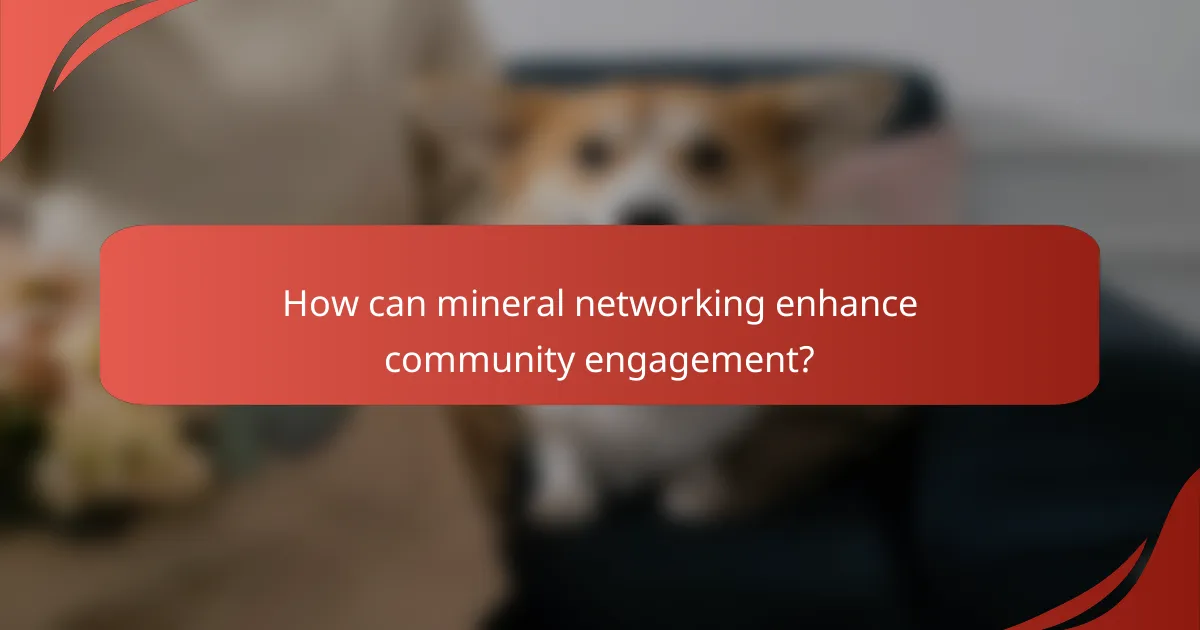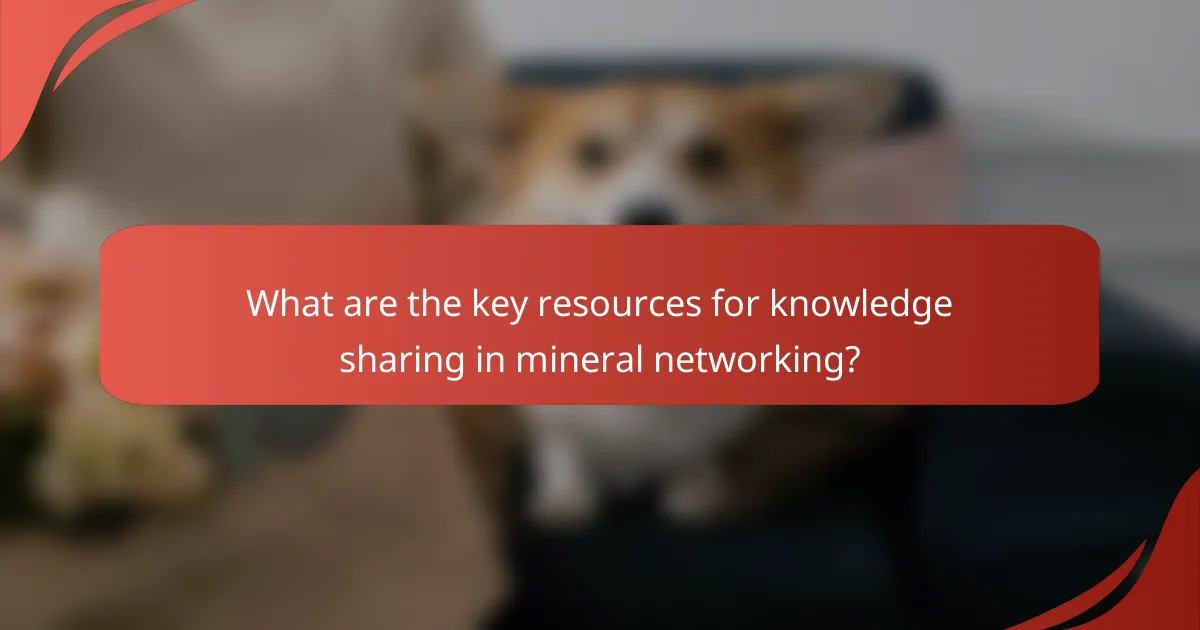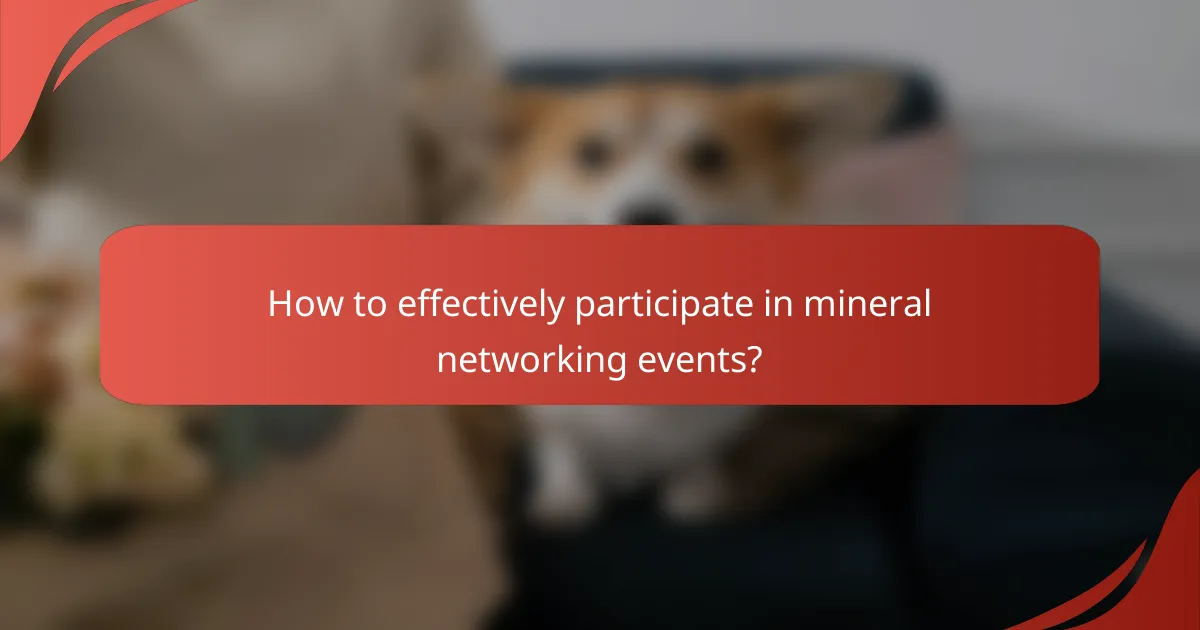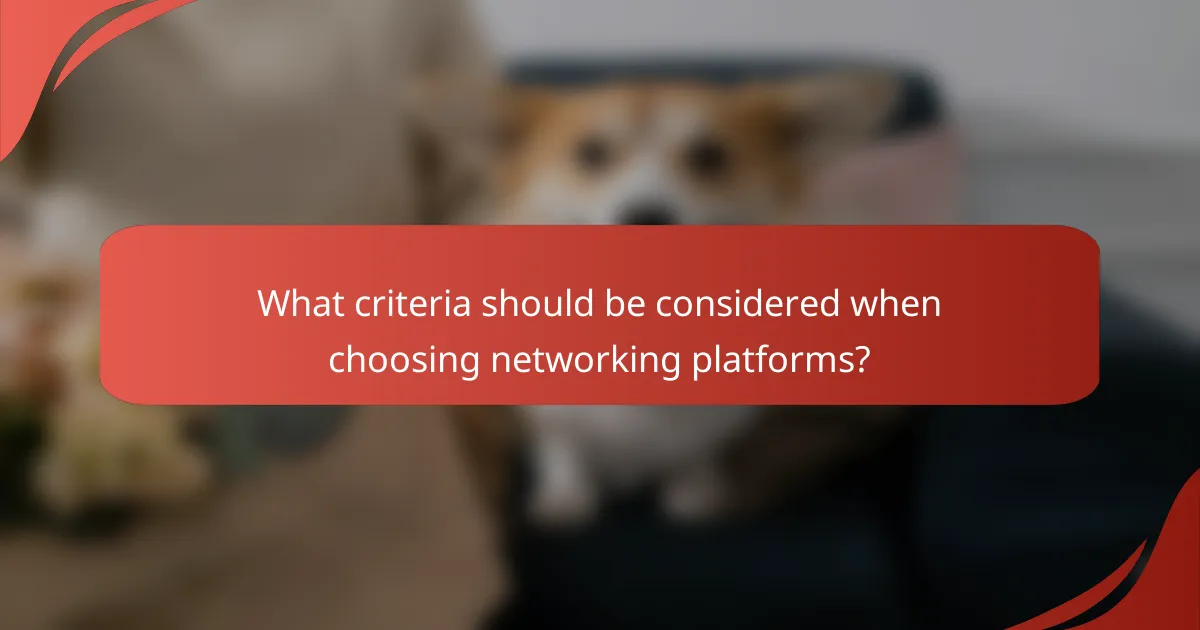Mineral networking plays a crucial role in enhancing community engagement by connecting industry professionals and promoting knowledge sharing. Through collaborative platforms such as industry publications and webinars, participants can access valuable resources and best practices. Effective participation in these networking events hinges on preparation, clear communication, and diligent follow-up to foster lasting relationships within the mineral sector.

How can mineral networking enhance community engagement?
Mineral networking enhances community engagement by fostering connections among industry professionals, facilitating knowledge sharing, and providing access to valuable resources. This collaborative environment encourages active participation and strengthens relationships within the mineral sector.
Increased collaboration among professionals
Collaboration among professionals in the mineral industry is vital for innovation and problem-solving. By networking, individuals can share insights, experiences, and best practices, which can lead to improved project outcomes and efficiency. Engaging with peers can also help identify potential partnerships or joint ventures.
To maximize collaboration, professionals should actively participate in local industry associations or groups. This involvement can lead to collaborative projects that benefit the entire community, such as joint research initiatives or resource-sharing agreements.
Access to specialized knowledge and resources
Networking provides access to specialized knowledge and resources that may not be readily available within a single organization. Professionals can tap into the expertise of others in areas such as geology, mining technology, and environmental management. This exchange of information can enhance decision-making and operational effectiveness.
Utilizing shared resources, such as databases or research reports, can save time and reduce costs. Professionals should consider creating or joining resource-sharing platforms to facilitate this exchange and ensure that valuable information is accessible to all members of the community.
Networking events and workshops
Networking events and workshops are essential for building relationships and enhancing skills within the mineral sector. These gatherings provide opportunities for professionals to meet face-to-face, share experiences, and discuss industry trends. Workshops can also offer hands-on training in new technologies or methodologies.
To get the most out of these events, participants should prepare by researching attendees and topics in advance. Setting specific goals for networking, such as meeting potential collaborators or learning about new tools, can lead to more productive interactions.
Online forums and discussion groups
Online forums and discussion groups serve as valuable platforms for ongoing engagement among mineral professionals. These virtual spaces allow for the exchange of ideas, questions, and solutions at any time, breaking down geographical barriers. Members can share resources, seek advice, and discuss challenges they face in their work.
To effectively participate in online discussions, professionals should contribute regularly and provide thoughtful responses. Engaging in these communities can enhance visibility and establish one’s expertise, leading to further networking opportunities and collaborations in the future.

What are the key resources for knowledge sharing in mineral networking?
Key resources for knowledge sharing in mineral networking include industry publications, webinars, and professional associations. These platforms facilitate the exchange of information and best practices among professionals in the mineral sector.
Industry publications and journals
Industry publications and journals are essential for staying updated on the latest research, trends, and innovations in the mineral sector. They often feature peer-reviewed articles, case studies, and expert opinions that can enhance understanding and inform decision-making.
Examples of notable publications include the Journal of Minerals and Materials Characterization and Engineering, and Mining Magazine. Subscribing to these resources can provide valuable insights and help professionals stay competitive.
Webinars and online courses
Webinars and online courses offer flexible learning opportunities for professionals in the mineral industry. These formats allow participants to engage with experts and peers, often covering specific topics such as mineral exploration techniques or sustainable mining practices.
Platforms like Coursera and LinkedIn Learning frequently host courses relevant to mineral networking. Engaging in these educational resources can enhance skills and expand professional networks.
Professional associations and organizations
Professional associations and organizations play a crucial role in mineral networking by providing platforms for collaboration and knowledge sharing. Membership in these groups often grants access to exclusive resources, events, and networking opportunities.
Examples include the Society for Mining, Metallurgy & Exploration (SME) and the International Council on Mining and Metals (ICMM). Joining such organizations can lead to valuable connections and insights into industry standards and practices.

How to effectively participate in mineral networking events?
To effectively participate in mineral networking events, focus on preparation, communication, and follow-up. Engaging with others in the industry requires clear goals, effective dialogue, and ongoing relationship management.
Preparation and goal setting
Before attending a mineral networking event, define your objectives. Are you looking to expand your professional network, seek partnerships, or gain insights into industry trends? Setting clear goals will guide your interactions and help you prioritize whom to connect with.
Research the event’s agenda and the attendees. Familiarize yourself with key speakers and companies present, which can help you identify potential contacts and tailor your conversations. Having a list of specific individuals or organizations to approach can enhance your networking effectiveness.
Effective communication strategies
During networking events, practice active listening and engage in meaningful conversations. Ask open-ended questions to encourage dialogue and show genuine interest in others’ experiences and insights. This approach fosters rapport and makes you more memorable.
Be concise and clear when introducing yourself. Prepare a brief elevator pitch that highlights your background, expertise, and what you seek from the interaction. Tailoring your pitch to the context of the event can make it more impactful.
Follow-up and relationship building
After the event, promptly follow up with the contacts you made. A simple email expressing appreciation for the conversation and reiterating your interest in staying connected can go a long way. Personalize your message by referencing specific topics discussed to strengthen the connection.
Continue to nurture these relationships by sharing relevant resources or insights that may benefit your contacts. Consider scheduling follow-up meetings or calls to explore potential collaborations. Building lasting relationships takes time and consistent effort, so remain engaged and proactive.

What criteria should be considered when choosing networking platforms?
When selecting networking platforms, consider user engagement, the platform’s reputation, and its accessibility. These factors significantly influence the effectiveness of community engagement and knowledge sharing.
User engagement and activity levels
User engagement is crucial for a vibrant networking platform. Look for platforms with active discussions, frequent updates, and a high number of participants. A community with regular interactions fosters knowledge sharing and collaboration.
Check metrics such as daily active users or the frequency of posts and comments. Platforms with thousands of active users typically offer more diverse perspectives and resources, enhancing the overall networking experience.
Reputation and credibility of the platform
The reputation of a networking platform can greatly affect your experience. Choose platforms that are well-regarded in the mineral industry, as they are more likely to attract knowledgeable participants and credible information.
Research user reviews and testimonials to gauge the platform’s credibility. Established platforms often have a history of successful networking and resource sharing, making them a safer choice for engagement.
Accessibility and user-friendliness
Accessibility and user-friendliness are essential for effective networking. A platform should be easy to navigate, with clear instructions and support options for new users. This ensures that all members can participate without frustration.
Consider platforms that offer mobile access and support multiple languages, especially if you are engaging with a global community. A user-friendly interface encourages more participants to join and share their knowledge.

What are the benefits of local mineral networking initiatives?
Local mineral networking initiatives provide significant advantages by fostering collaboration among stakeholders, enhancing community engagement, and facilitating knowledge sharing. These initiatives can lead to improved resource management, economic growth, and stronger regional identities.
Support for regional mining communities
Regional mining communities benefit from local mineral networking initiatives through enhanced support systems. These initiatives often create platforms for sharing best practices, addressing challenges, and advocating for local interests, which can lead to better working conditions and community development.
By connecting miners, local businesses, and government entities, these networks can mobilize resources and funding more effectively. This collaboration can result in initiatives that improve infrastructure, education, and health services in mining areas, ultimately strengthening the community’s resilience.
Promotion of local resources and expertise
Local mineral networking initiatives promote the utilization of regional resources and expertise, which can lead to more sustainable mining practices. By highlighting local talent and knowledge, these networks encourage the development of innovative solutions tailored to the specific needs of the community.
For example, workshops and training sessions can be organized to share technical skills and best practices among local miners. This not only enhances the workforce’s capabilities but also fosters a sense of pride and ownership within the community, ultimately contributing to the local economy.
